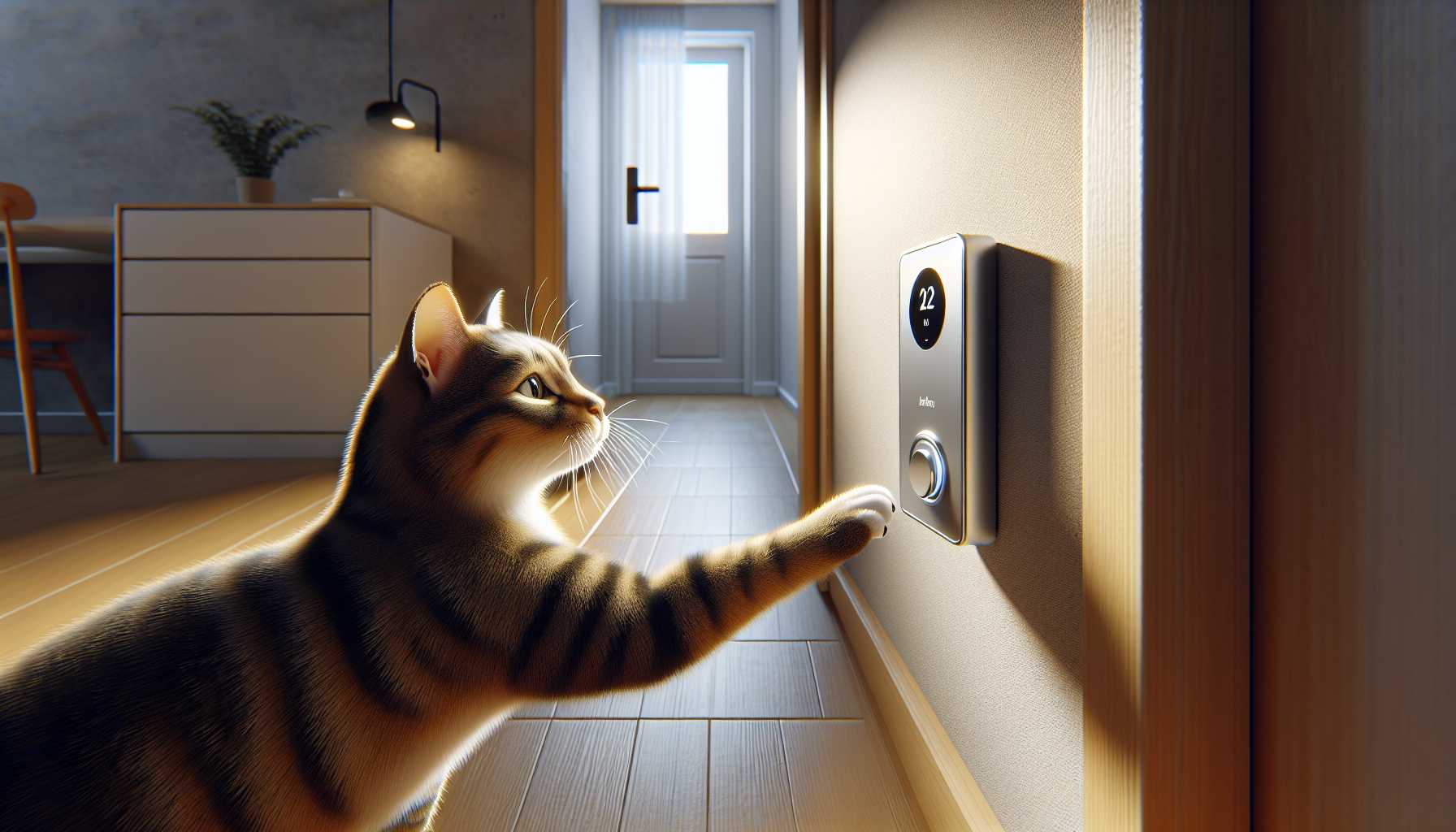Have you ever found yourself wishing that your cat wouldn’t scratch at the door or meow incessantly when they wanted to go outside, but could instead communicate their desire more politely? Good news – training your cat to use a doorbell is not only achievable, but can also be a fun bonding experience!
The Benefits of Doorbell Training for Cats
Naturally, cats can be a tad demanding when they wish to venture outdoors. Introducing a doorbell system provides them with a straightforward method of expressing their needs, which does wonders for preserving the integrity of your door and reducing their constant meowing!
Picking the Perfect Doorbell
Bear in mind that not all doorbells will be suitable for your feline. When shopping, consider the following:
– The button should be easy to press
– Opt for wireless systems for ease of positioning
– Ensure the material is sturdy enough to cope with enthusiastic paws
– Look for adjustable volume settings
Kick-starting The Training Process
The task of training your cat to use a doorbell is just as achievable as teaching them to use a litter box. To get started:
1. Set the doorbell to a height that’s comfortable for your cat
2. Favor treats for positive reinforcement
3. Stick to a consistent training schedule
4. Ensure the training sessions are brief and enjoyable
The Training Process Breakdown
Step 1: Familiarizing Your Cat with the Doorbell
Introduce your cat to the doorbell, letting them examine it at their own pace. To make this a positive experience, offer them treats nearby.
Step 2: Associative Training
Each time you open the door for your cat to go outside, gently guide their paw to the bell and ring it. Then, immediately open the door.
Step 3: Introduce a Reward System
Use treats, praise, and time outdoors as rewards for ringing the bell. This will help your cat make the connection faster!
Potential Setbacks and Ways to Overcome Them
If your cat seems baffled at first, don’t worry. Common challenges include:
– Ignoring the doorbell
– Ringing the doorbell excessively
– A fear of the sound
Stay patient and consistent, and in no time, most cats will grasp the concept.
Helpful Training Tips
- Keep the tone of the training sessions positive and make them brief
- Use treats that your cat loves
- Avoid telling off your cat during training
- Keep training routines consistent
- Celebrate even the smallest of successes
The Ripple Effects of Doorbell Training
This mode of training:
– Fosters a stronger bond with your pet
– Offers mental stimulation for your cat
– Reduces stress levels for both you and your pet
– Cultivates a more peaceful home
When to Expect Results
Every cat learns differently and at their own pace, but most will master the doorbell system in a few weeks.

